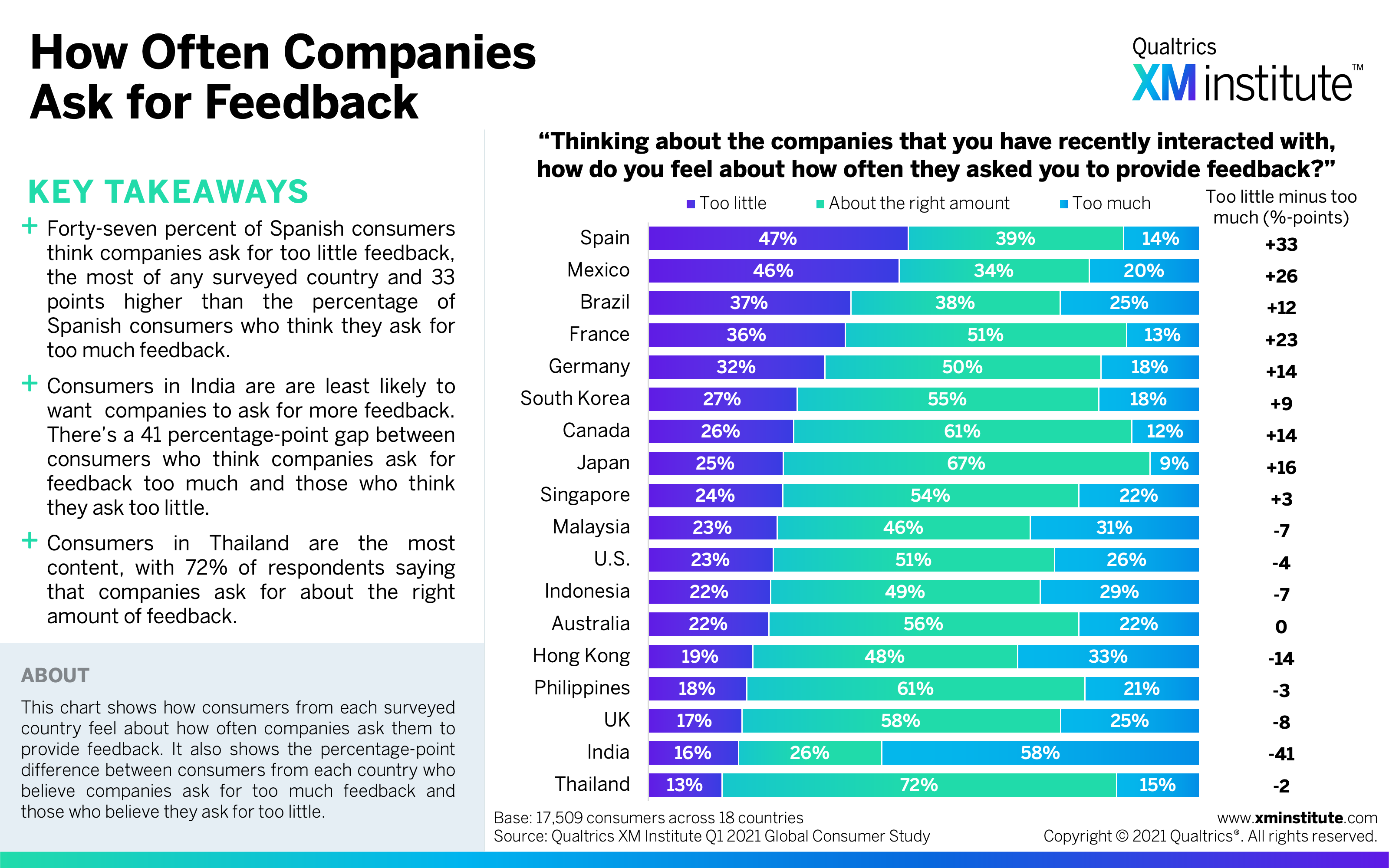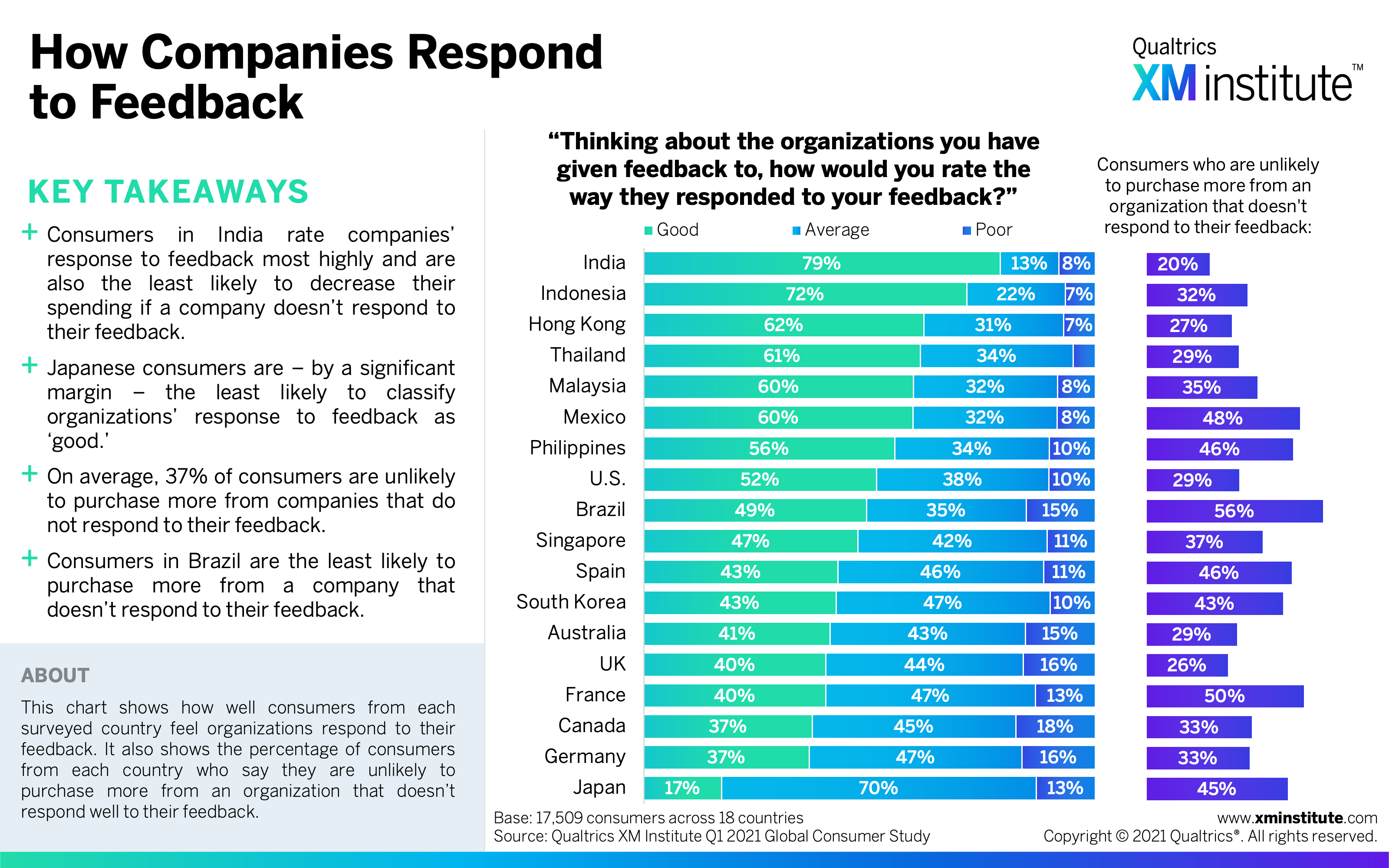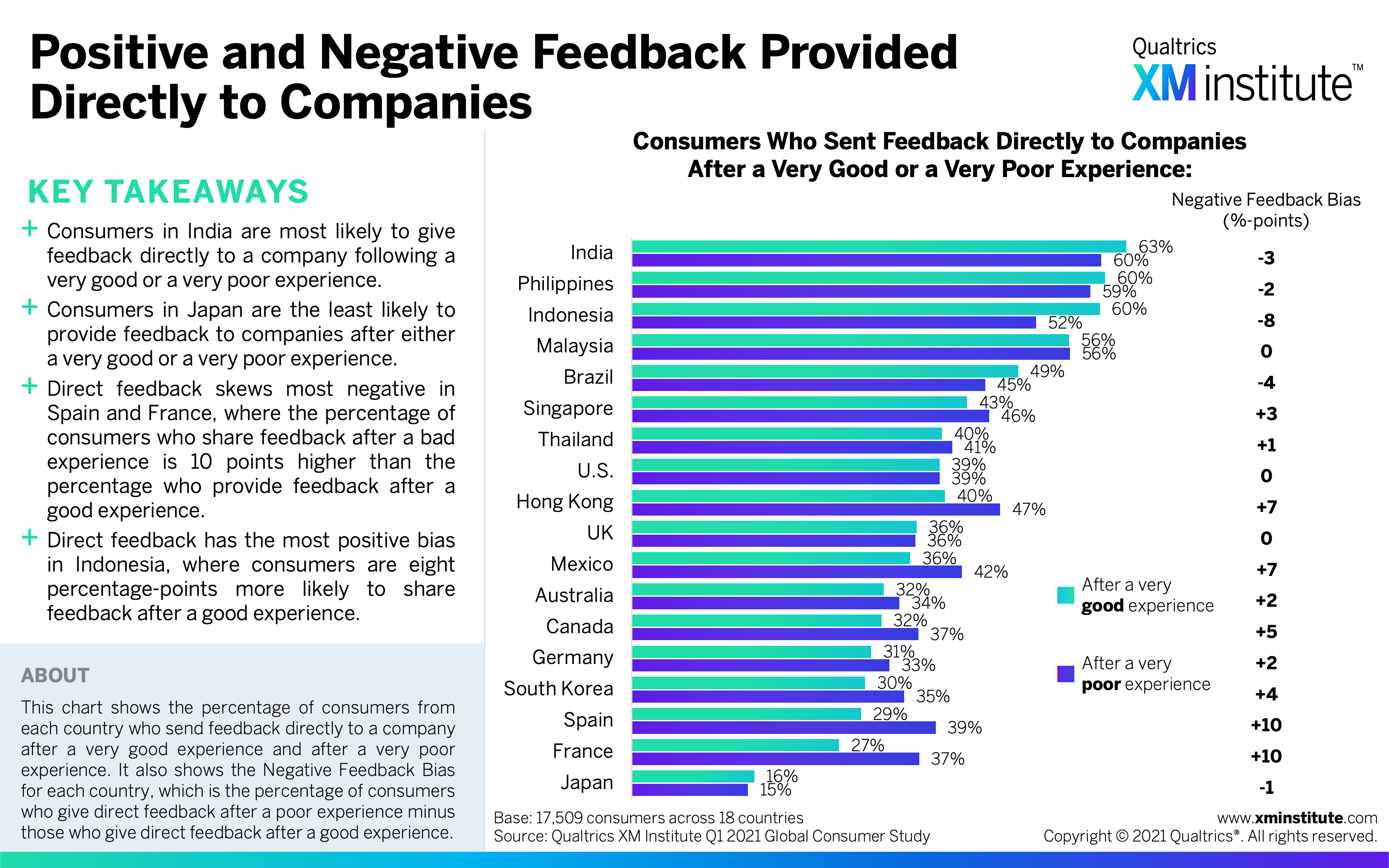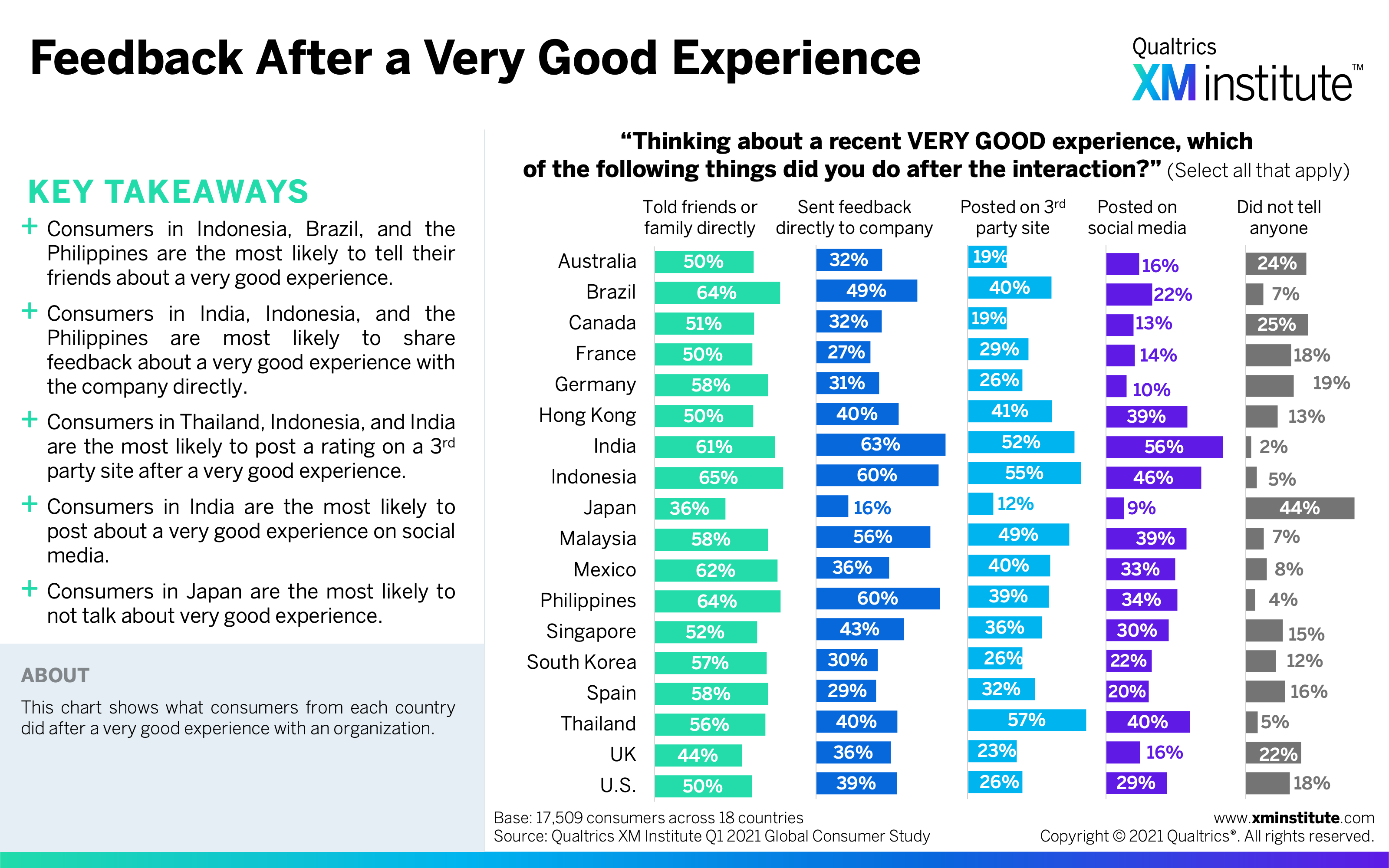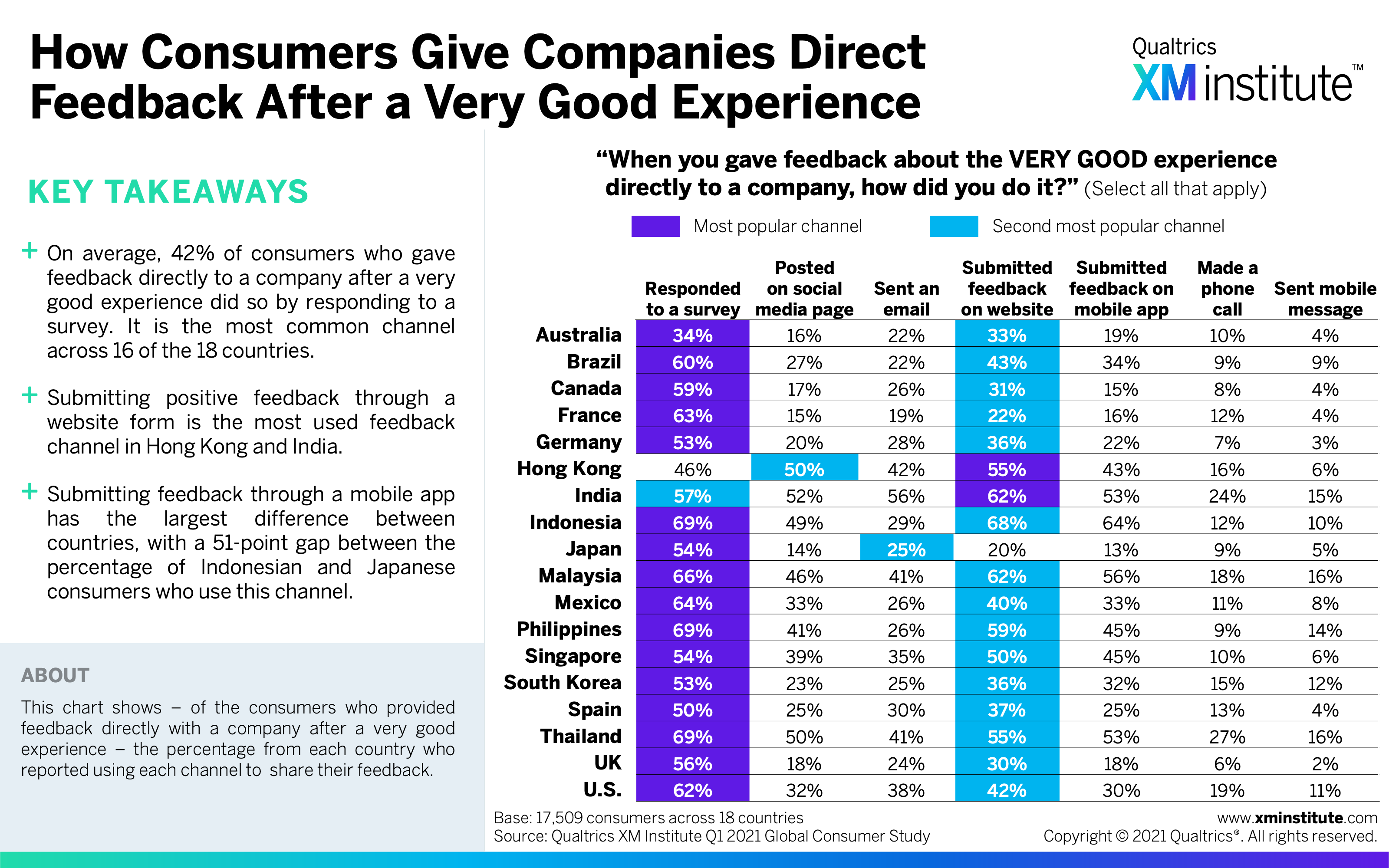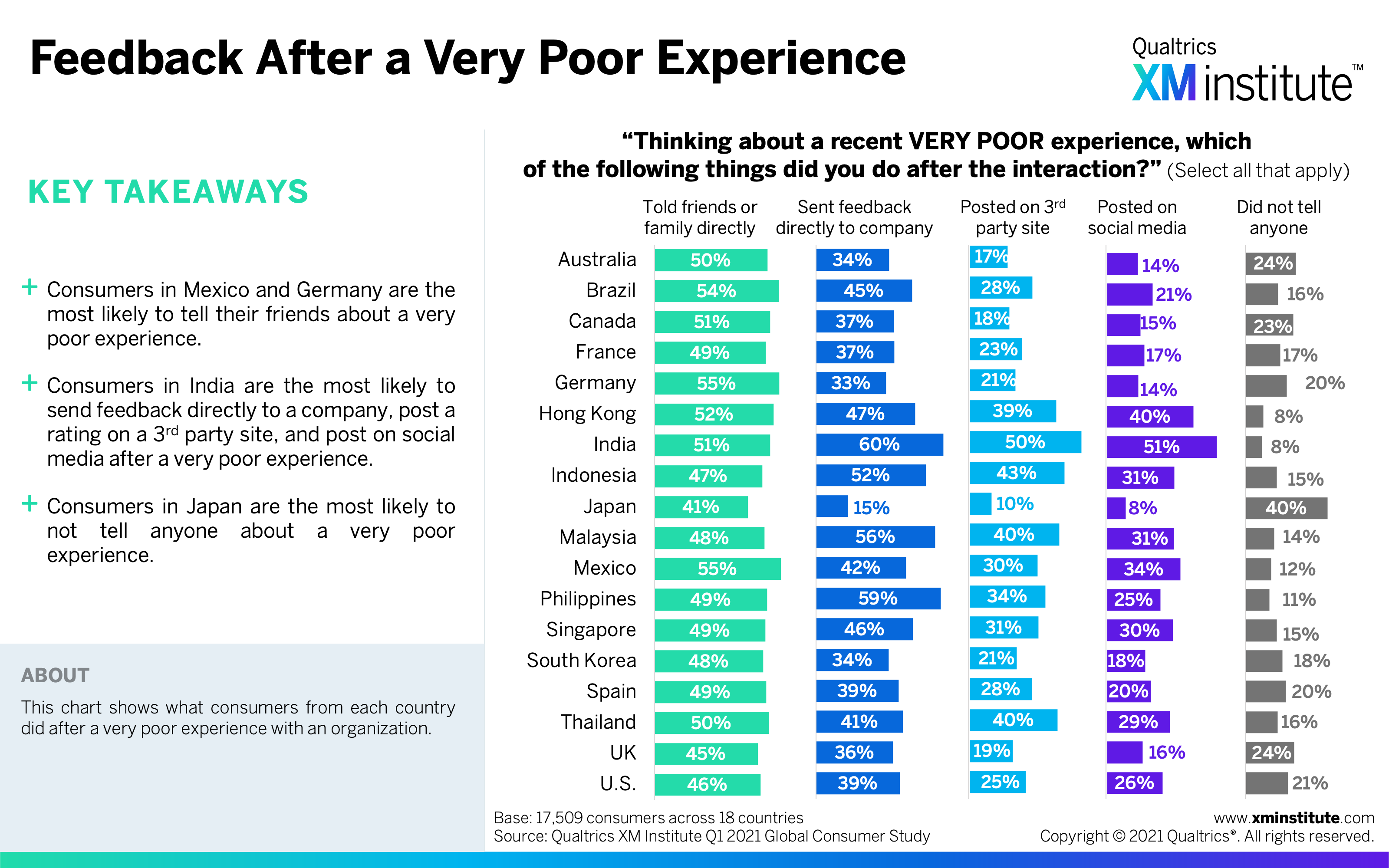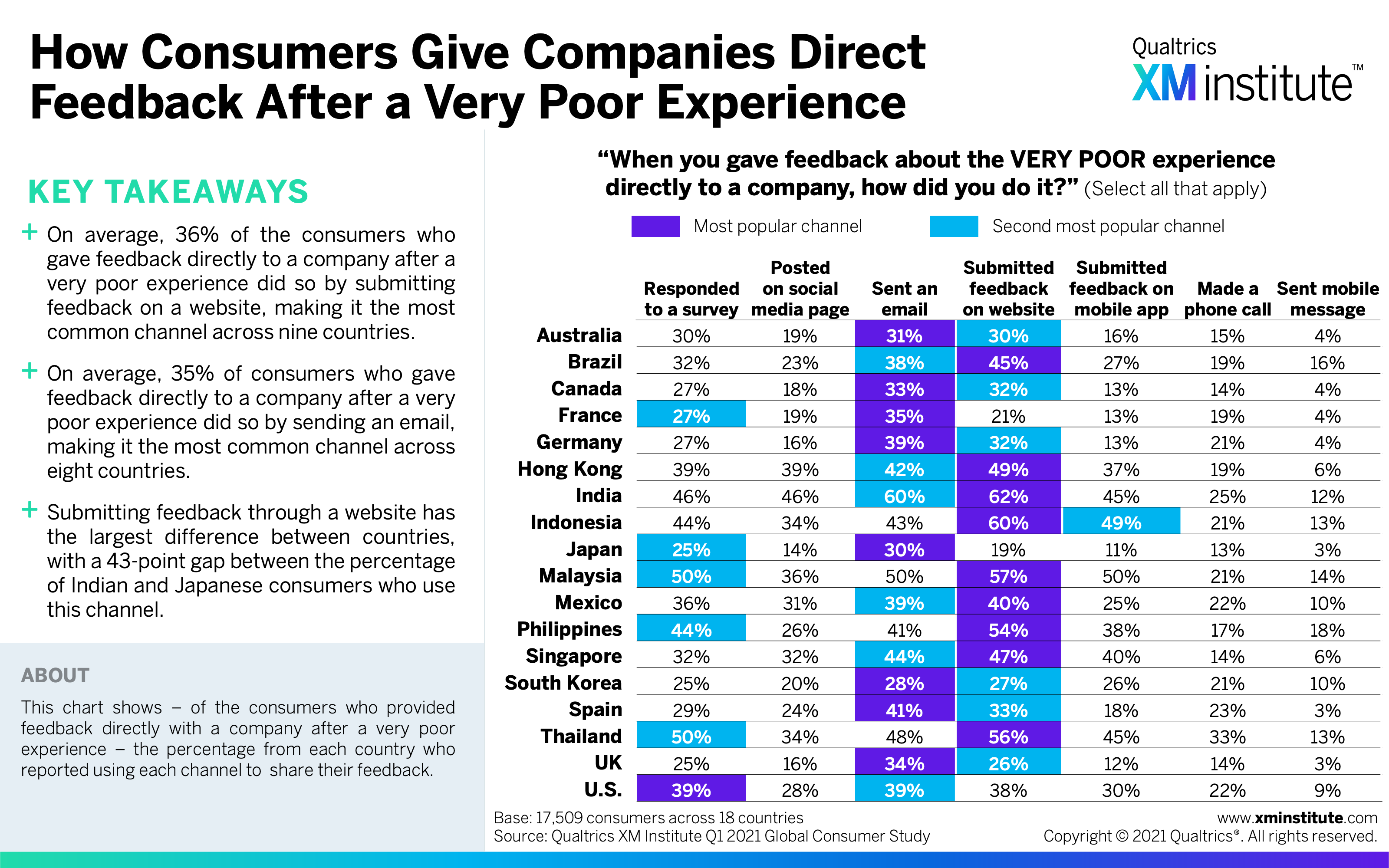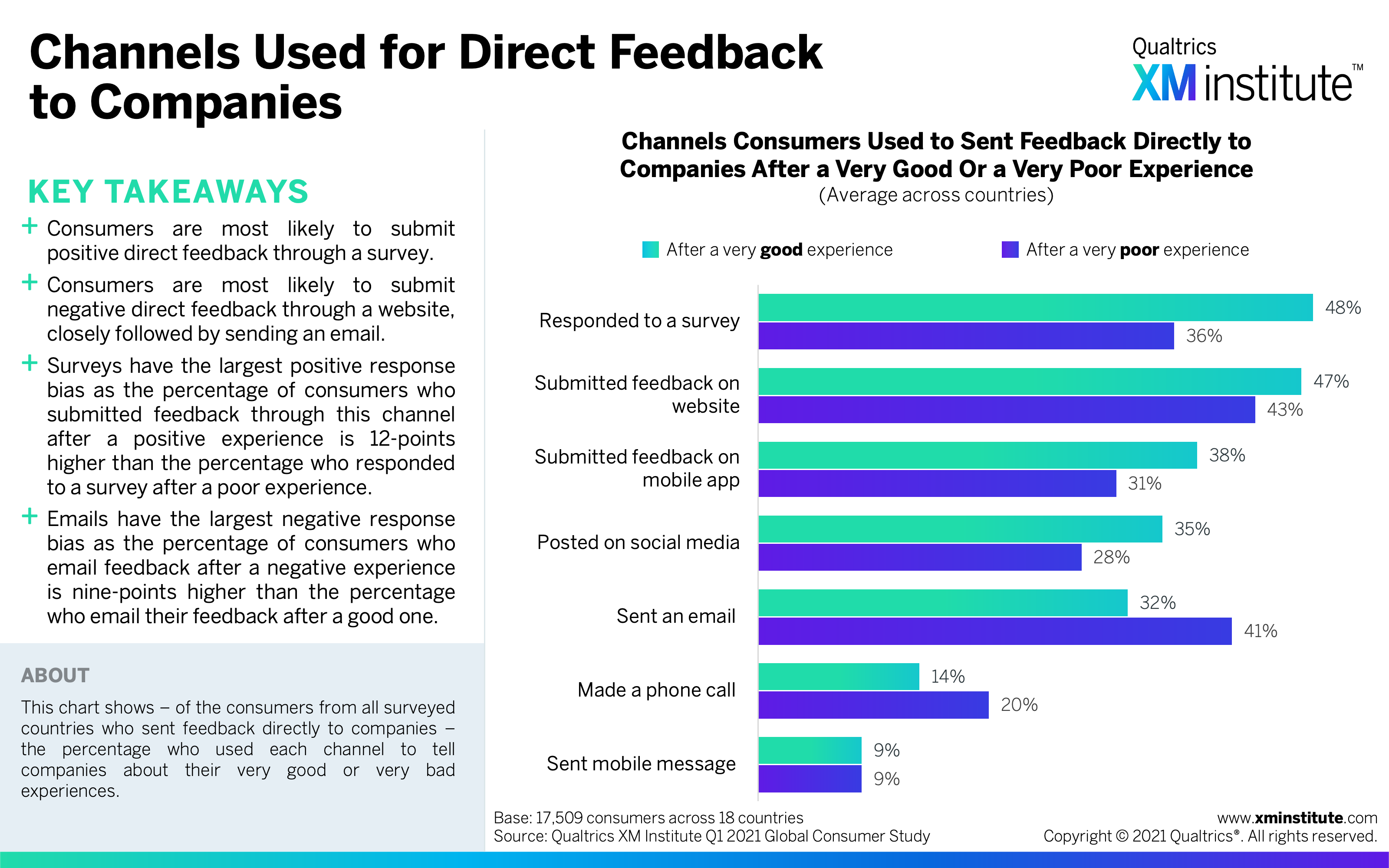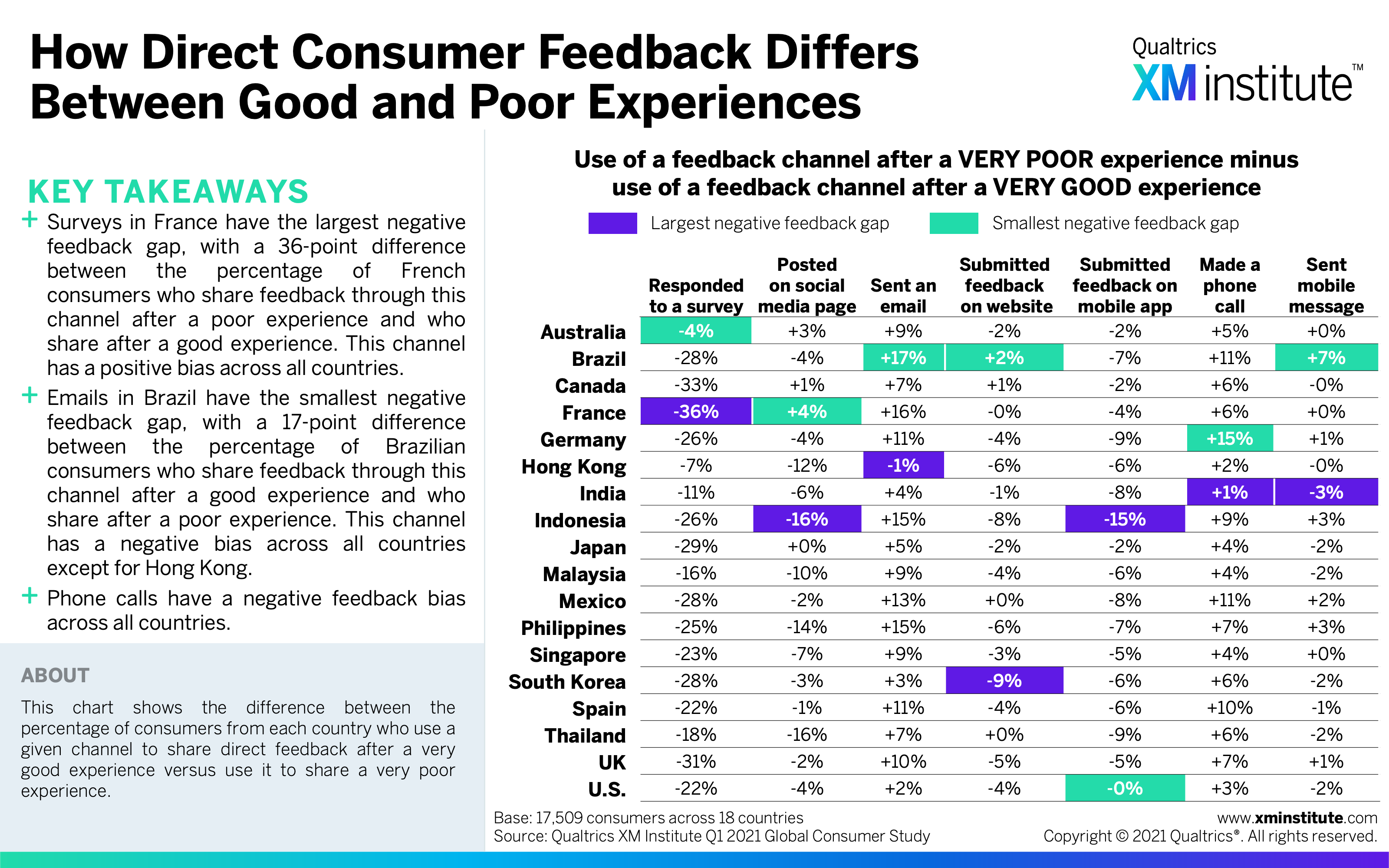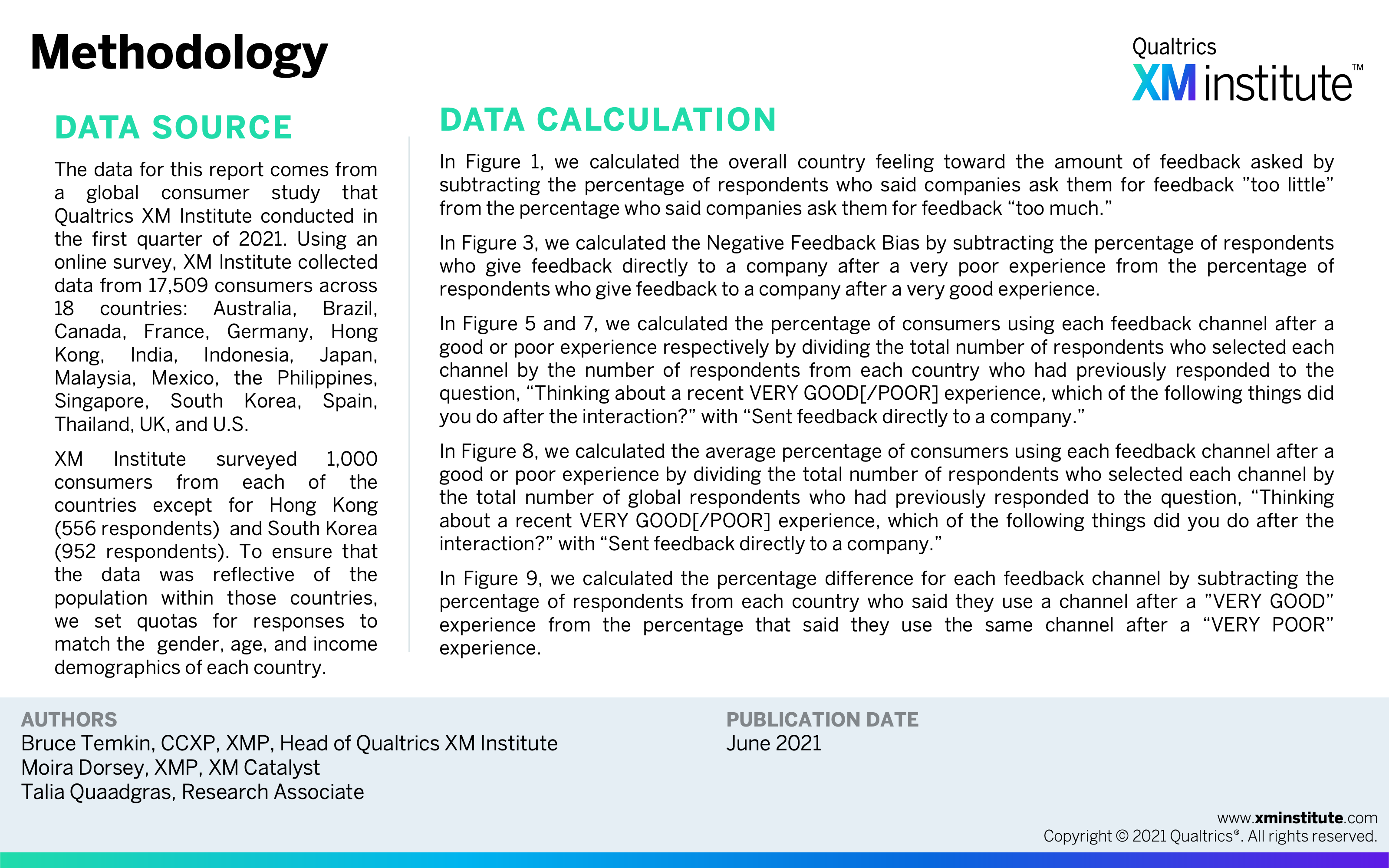Key Findings:
This study examined consumer behavior around providing organizations with feedback. Highlights from this study include:
- Only half of all consumers believe companies ask for the right amount of feedback. Just 51% of all consumers feel that companies ask for ‘about the right amount’ of feedback, with Spanish consumers most likely to think companies ask for too little feedback and Indian consumers most likely to think they ask for too much.
- People share both good and bad experiences with friends and family. Fifty-five percent of all consumers told friends and family about a very good experience, and 49% told them about a very bad experience. Meanwhile, only 40% of consumers sent feedback directly to a company after a good experience, and 42% send feedback after a bad experience.
- Consumers share negative feedback through websites and email. In nine of the 18 countries, consumers who give feedback directly to a company after a bad experience are most likely to submit their feedback through a website, while consumers from eight of the countries are most likely to provide direct feedback by sending the company an email.
- Surveys have the highest positive feedback bias. The percentage of consumers who say they use surveys to share feedback after a positive experience is 12 percentage-points higher than the percentage who use it to report a poor experience – the largest gap for any feedback channel.
Figures:
Here are the figures in this snapshot:
- How Often Companies Ask for Feedback (see Figure 1)
- How Companies Respond to Feedback (see Figure 2)
- Positive and Negative Feedback Provided Directly to Companies (see Figure 3)
- Feedback After a Very Good Experience (see Figure 4)
- How Consumers Give Companies Direct Feedback After a Very Good Experience (see Figure 5)
- Feedback After a Very Poor Experience (see Figure 6)
- How Consumers Give Companies Direct Feedback After a Very Poor Experience (see Figure 7)
- Channels Used for Direct Feedback to Companies (see Figure 8)
- How Direct Consumer Feedback Differs Between Good and Poor Experiences (see Figure 9)
- Methodology (see Figure 10)


